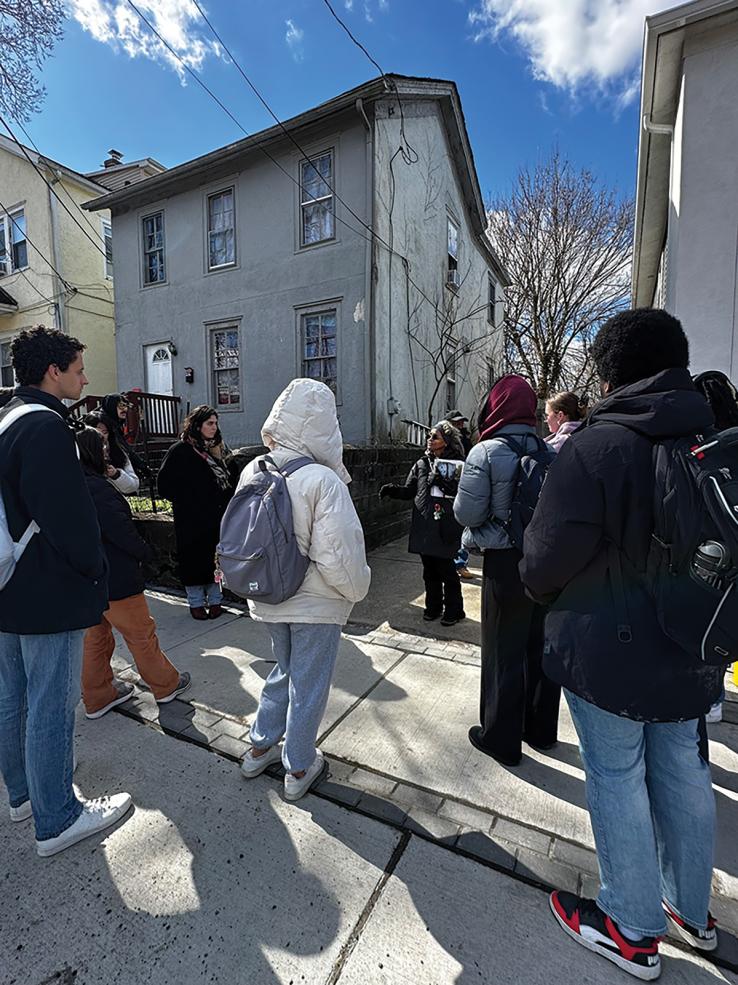
Though 98% of Princeton undergraduates live on campus, the current turbulence of the country’s housing market has some students already stressing about housing uncertainties after graduation.
That’s partly why Aaron Shkuda, project manager of the Princeton-Mellon Initiative in Architecture, Urbanism, and the Humanities — which aims to “develop a more dynamic and nuanced understanding of urban issues today,” according to its website — is offering a new class this spring, Affordable Housing in the United States, that examines past and present housing issues and the policy, design, activism, and economic factors at play.
One can easily find both luxury housing and the unhoused in large cities, but, according to Shkuda, an urban and metropolitan historian, “a lot of that dynamic is hidden in Princeton, and so I want to try to get [the students] to be able to read the built environment [and] understand the places around them.”
During one of several walking tours this spring, Shkuda’s 25 students explored a Princeton suburb and then researched records dating back to the 1920s to uncover how certain buildings and areas changed over time.
“It was really interesting to see the history of who was living here and to experience the surroundings of Princeton on a more personal level,” said Allison Jiang ’26, a sociology major who had never ventured into Princeton’s suburbs on her own.
Economics major Brett Feyerick ’25 is a member of the University’s real estate club and the son of a policymaker at Ginnie Mae — the Government National Mortgage Association — but it wasn’t until this class that he learned about “the history behind the housing market, the good and the bad.”
That “dark history” is intertwined with racial segregation, Feyerick said, and “in certain urban areas, it’s super expensive to live, and certain groups are marginalized and sort of pushed out of the housing market.”
Shkuda said he thinks Princeton is full of empathetic students “who want to make a difference in the world, but also, they have to live in housing eventually, and it’s a really scary prospect of like, ‘Oh gosh, where might I live?’ And so, I think there’s a little bit of productive self-interest there.”
For the midterm, students wrote papers on policies that shape New Jersey’s affordable housing, and for the final, they are working in groups to develop policy, design, and urban planning recommendations for specific sites in Princeton that either are currently or could be converted into affordable housing.
“It’s been really nice to get to know more about how the University plays a role in the surrounding neighborhoods here,” said Jiang. “I just want a better understanding of the community I’m in.”
